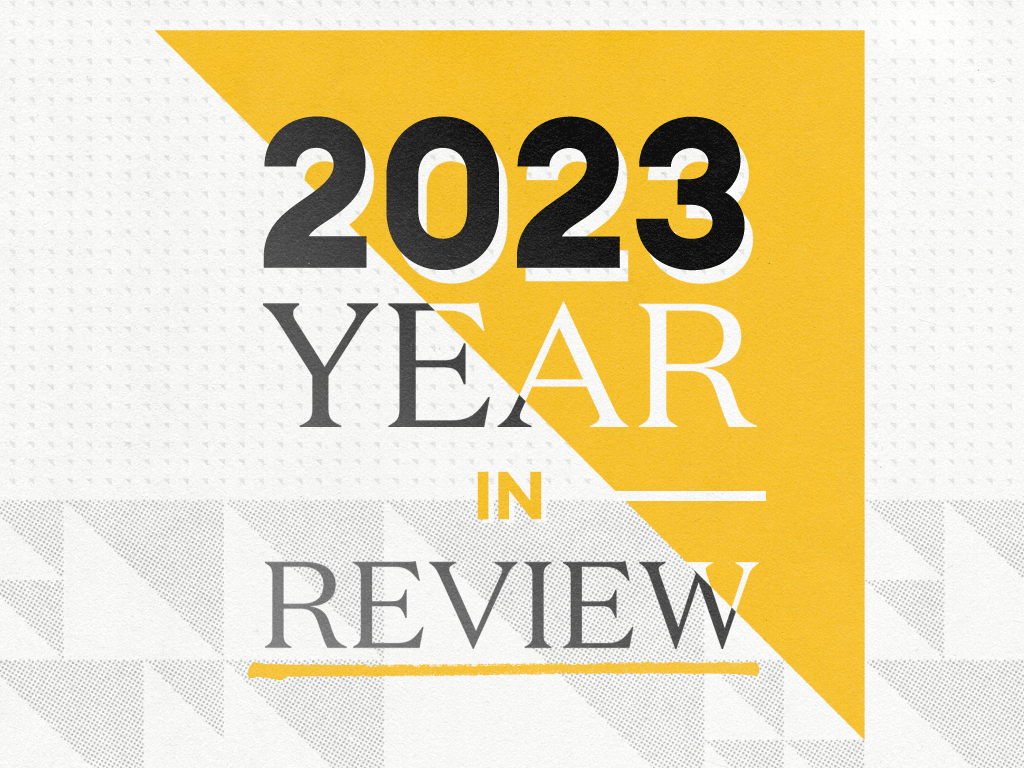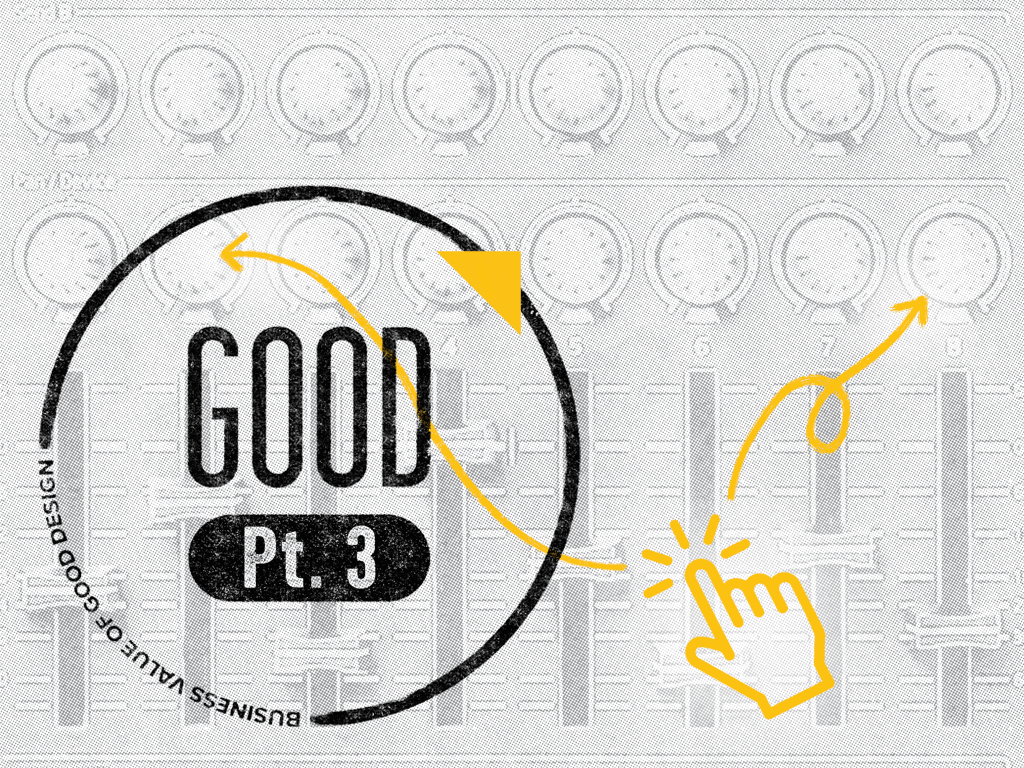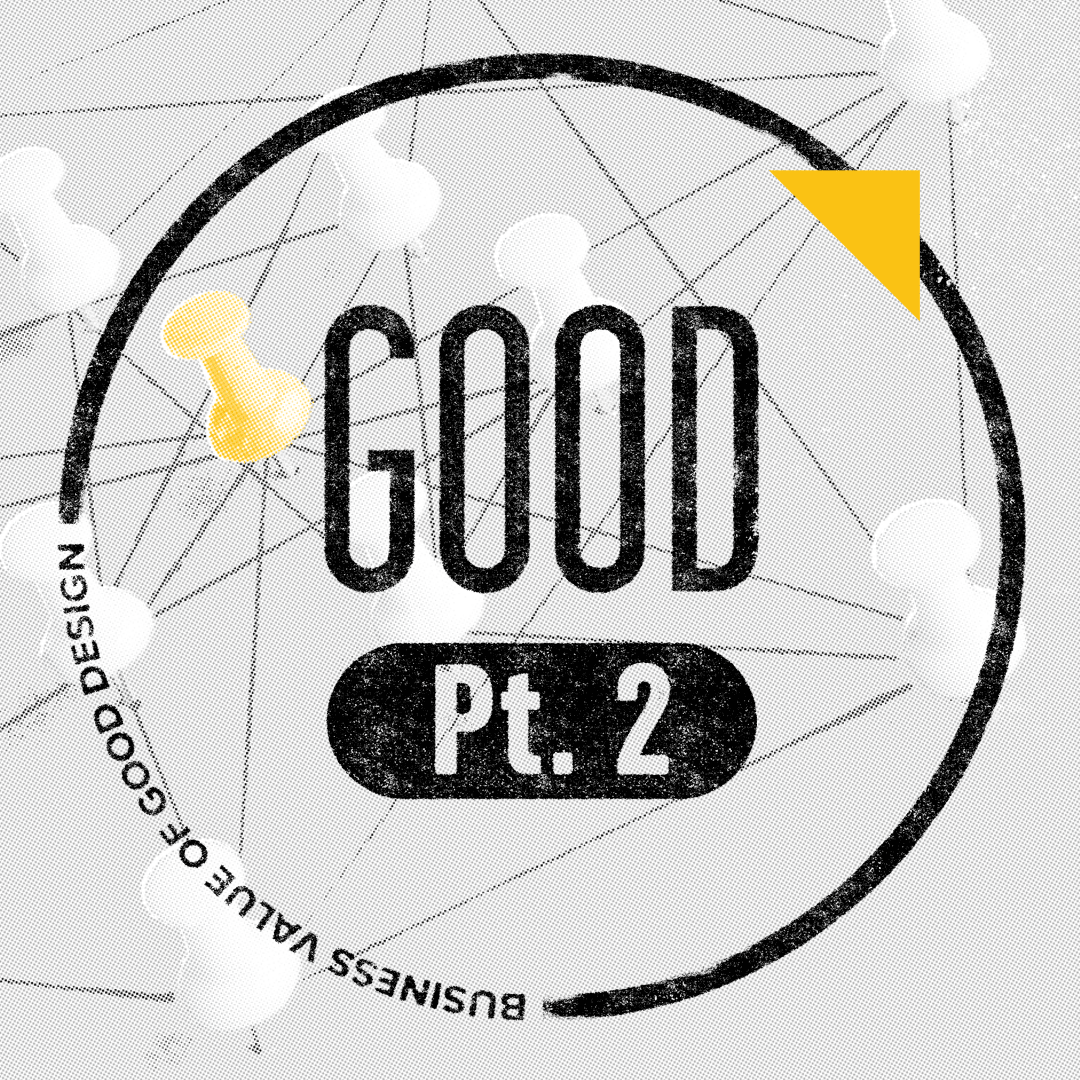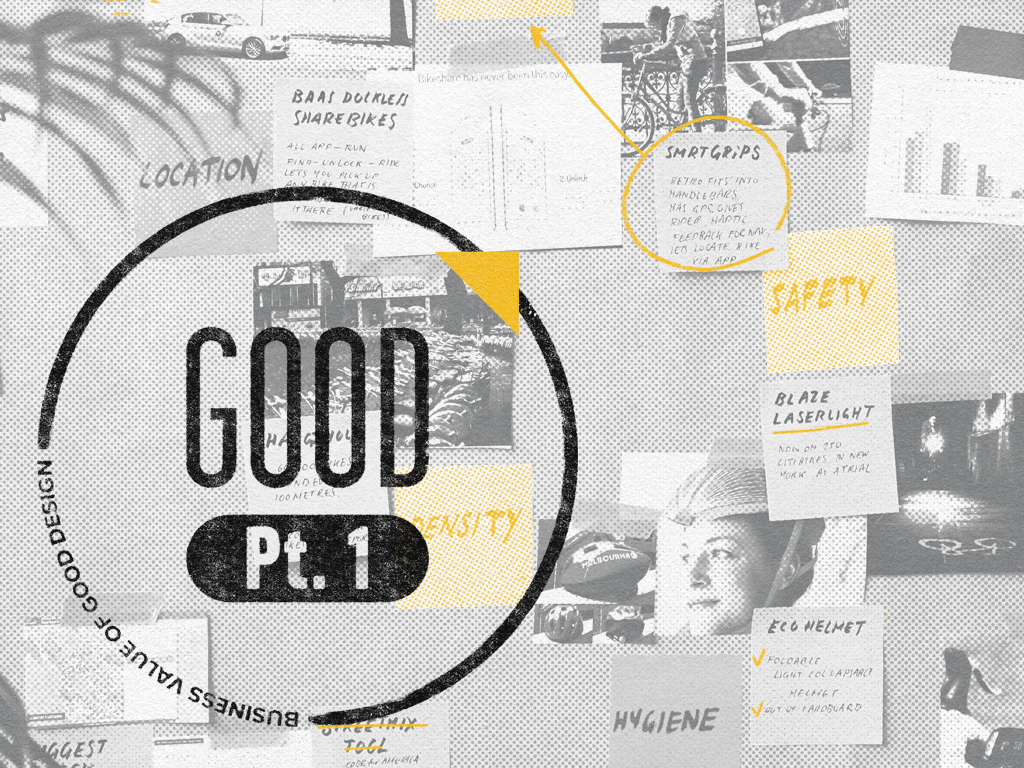As we draw near the close of 2023, our sights are set on the year ahead and in true Tallwave fashion, we’re turning our focus to the challenges and possibilities of a new year. But before we run headlong into 2024, we’re taking a moment to reflect on all we accomplished this year.
Our incredibly talented teams executed high-value work that made a real impact on our clients’ businesses. The brilliant thought leaders among our ranks contributed knowledge to the benefit of prospective clients, partners, and business leaders of all stripes. And Tallwavers at every level of the organization seized opportunities to learn, develop, and grow, demonstrating that our value of relentless pursuit isn’t just a series of words, but words we live by. In the spirit of honoring auld lang syne (times long past), here are the highlights the Tallwave team will be toasting as we ring in the new year.
Creating value for our clients
Looking back over our work in 2023, data enablement and modernizing the technology and strategies for delivering on customer needs stand out as themes in some of the most ambitious challenges we helped our clients tackle.
Powering up a customer portal strategy
In 2022, we were engaged by a private, independent energy company with over 35 years of experience in the industry. They’d always been technology-forward thinkers, and their customer connect portal was already a differentiator that set them apart from competitors and contributed to their number one ranking in the industry for customer service. As a tech-forward company, they were planning for ongoing evolution of their portal into a best-in-class solution that continued to meet the needs of their customers.
After evaluating their portal and making strategic recommendations in late 2022, the stage was set to translate strategy into action in 2023. Over the course of the year, we’ve worked with our client to design, test, and validate a new customer connect portal 3.0 solution, implement a measurement strategy to evaluate the performance of the new portal solution, and provide ongoing analytics maintenance, reporting, and strategic insights for a portal that’s always evolving, improving, and creating value for our client’s customers.
Enabling growth through an upleveled internal asset management strategy
One of our largest, most complex clients, a multinational financial services corporation, enlisted our help to establish the proper team and organizational structure, improve data quality to unlock insights that empower decision making, standardize global policies and procedures, and strengthen relationships that align into the broader enterprise with the right engagement models. These desired outcomes coincided with an increase in demand for internal technology assets, intensifying hardware budget management demands, and the increasingly complex logistics for supporting a global workforce’s technology needs.
They initially engaged us to help them create a playbook of standard operating procedures to drive predictability, agility, and efficiency in servicing employee tech needs. But as we helped them imagine the art of the possible, we set our sights higher, ultimately building a strategy for service automation and digital experiences that work in concert with SOPs and designing an MVP solution and a framework to continually build upon their internal product ecosystem to drive efficiency, scale, accuracy, and predictability. This, in turn, will help our client optimize their internal technology asset investments, reduce risk, and improve the quality of service to colleagues.
Enabling data-driven business processes by translating between business needs and infrastructure parameters
CP Skin Health Group, Inc., a division of Colgate-Palmolive focused on product and service innovation for dermatologists, estheticians, and other skin health professionals, found themselves in a position common among our clients. Rapid growth, including the merging and acquisition of well-established and high-performing brands, led to a fractured data ecosystem. They were leveraging multiple disparate data sources and systems across their business units and many of the processes required for their business relied on manual data entry, which negatively impacted their sales and marketing teams’ ability to operate effectively at scale and created a poor customer experience. They needed a partner to work alongside their Global IT team to create a more unified technology and data infrastructure to serve the needs of the business.
We brought business stakeholders together with their Global IT team to map their data environment, identify and document technical limitations and risks in their data inventory, and define problem statements. As a result of our work, the skin health division and the Global IT team were able to align on a shared data strategy and vision that would pave the way for better support for the skin health division’s business needs and lay the foundation for future data analytics capabilities. This allowed the skin health division’s marketing team to operate more effectively and efficiently and optimized sales processes to deliver better customer experiences and business outcomes.
Bringing a new mobile app to life at the speed of light
Working with one of our development partners, we embarked on a journey to redesign and develop a new mobile application for a national broadband communications provider. The new application required some complex features—like account registration and management, bill pay, service appointment scheduling, and more—that also played high-stakes roles for the customers who would ultimately use them. And the timeline for getting it done was tight. But that’s just the kind of ambitious challenge the Tallwave team thrives on.
We mobilized our wildly talented product design team to quickly develop a digital brand UI kit, UX/UI designs for 3 new complex user flows, front-end code acceleration training, and consultation on UX/UI execution, usability, and accessibility in the span of just a few weeks. The team’s work was a shining example of our ability to deliver great mobile app design at the speed of light without sacrificing our commitment to deliver a great CX for consumers.
A power-packed, end-of-year kickoff for a 2024 product strategy
We partnered with a new client, an energy management services, procurement, and energy infrastructure development firm, in December to help them define and package their intellectual capital and expertise into an ongoing and scalable data-as-a-service (DaaS) product. Starting our engagement this late in the year, it would have been easy to assume we’d kick off in January. But with a client who shares our bias toward rapid action, we decided there’s no time like the present to get the ball rolling.
This month, we mobilized our team to head out to the client’s offices in Texas to lead them through a full-day workshop with their senior leadership team to understand the energy ecosystem and value chain and begin to formulate ways to package their unique value to customers. Seizing the moment to begin our work now puts us in a strong position to advance our plans to design, develop, and test the product concept with prospective customers and develop a go-to-market plan that drives immediate adoption upon launch in the new year.
Contributing thought leadership to the industry
The work we did for our clients wasn’t the only way we created value in 2023. Tallwavers showed up as thought leaders, contributing their knowledge and perspectives on hot industry topics like data unification and enablement, conversion rate optimization, and more at industry events and a few of our own. Some standout moments include:
On the physical stage at Brand Innovators
At the Brand Innovators Sports Marketing Upfronts in Scottsdale, Arizona in February, Tallwave Partner, Robert Wallace, had the privilege of moderating a panel session with members of the marketing team from Riddell Sports Group, a leader in high-performance football gear.
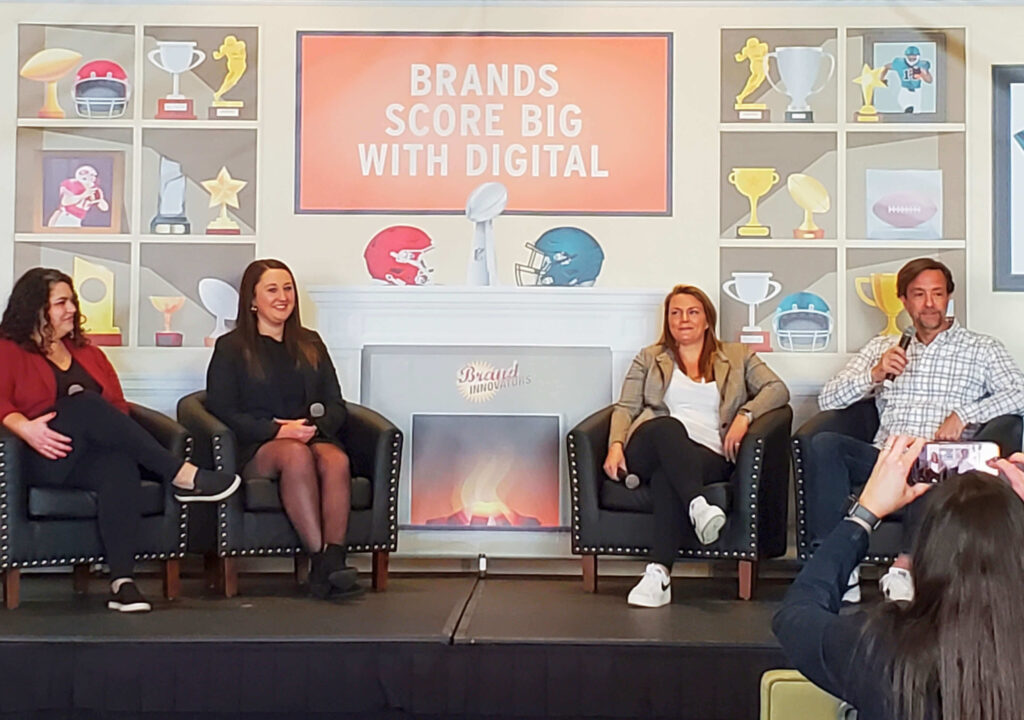
On the virtual stage at the GDS CX Innovation Summit
Our SVP of Marketing, Jessica Pumo, hit the big screen at the GDS CX Innovation Summit in May, presenting a Masterclass Keynote on bridging the data divide. The topic of overcoming fractured data ecosystems to harness the business power of data resonated so much, she gave a special live encore presentation at our invite-only dinner for current and prospective clients focused on data unification and enablement in August.
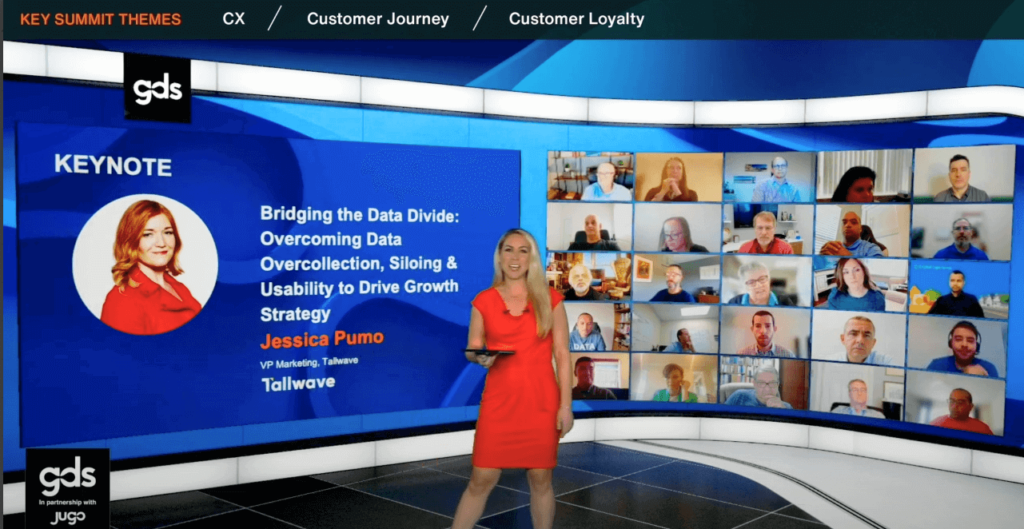
Spreading the word on the value of CRO
Conversion rate optimization can be an extremely effective strategy for improving conversion rates and maximizing return on investment in traffic-driving marketing. But it requires a highly integrated approach to execute, making it difficult for clients and many other digital agencies to capitalize on. Our Integrated Marketing team brought their knowledge, experience, and expertise to conversion-conscious brands of all kinds in a CRO webinar in May.
Pursuing personal and professional growth
Our ability to do great work for clients and contribute thought leadership to our industry is fueled by our relentless pursuit of growth. In 2023, Tallwavers fed their brains, expanded their knowledge, and refined their perspectives on a wide range of topics through conferences, events, and other personal and professional development opportunities. Here are two that really blew us away:
Making quality connections at KPMG /Michigan Ross QuantumShift
Tallwave CEO, Jeff Pruitt, had the rare opportunity to attend QuantumShift, an exclusive four-day peer-to-peer learning experience for the top decision-makers of fast-growing private companies. This experience took Jeff out of his day-to-day business environment to share with, learn from, and collaborate with leading CEOs from around the country as well as top professors from the University of Michigan’s world-renowned Stephen M. Ross School of Business. It was a highly impactful experience that allowed him to live our value of thoughtful rigor in a whole new way while embracing the power of human connection.
Having flurries of fun at the Snowflake Data Cloud World Tour
Senior Data Strategist, Brooke Weidenbaker, and Engagement Manager, Rikki Ebenal attended the Snowflake Data Cloud World Tour event in Austin, Texas where they plowed through presentations, demos, and customer breakout sessions celebrating data centricity and came away with new ideas and examples to share with clients as we help them navigate the data maturity curve.
Raising a glass to the past and focusing on the future
Reflecting on all we’ve done, everywhere we’ve been, and everything we’ve accomplished, we’re proud of the year we’ve had. And we’ll be raising a glass in gratitude for the opportunities it’s brought us to learn, grow, and evolve and to help others do the same. It’s been a year worthy of celebration. But when the clock strikes midnight on December 31, our gaze will be squarely focused on the future and all the opportunities that lie ahead to help our clients dream bigger about the growth possible for their brands, discover a path to achieve it, and not just do what it takes to get there, but to constantly strive to do better together.

